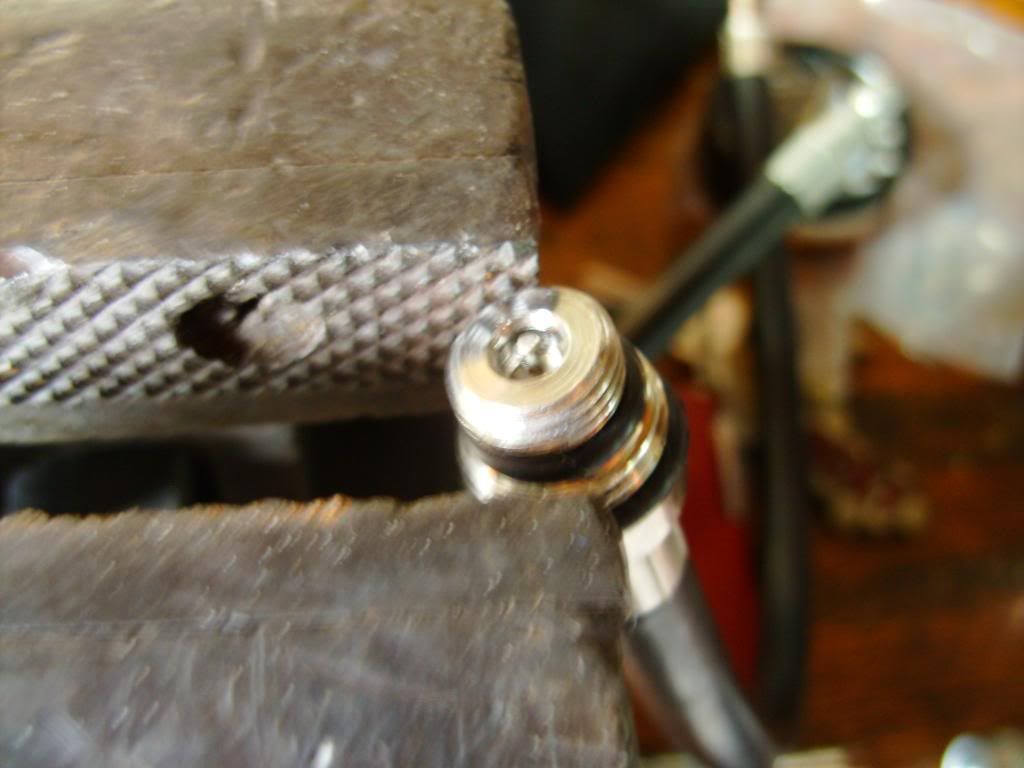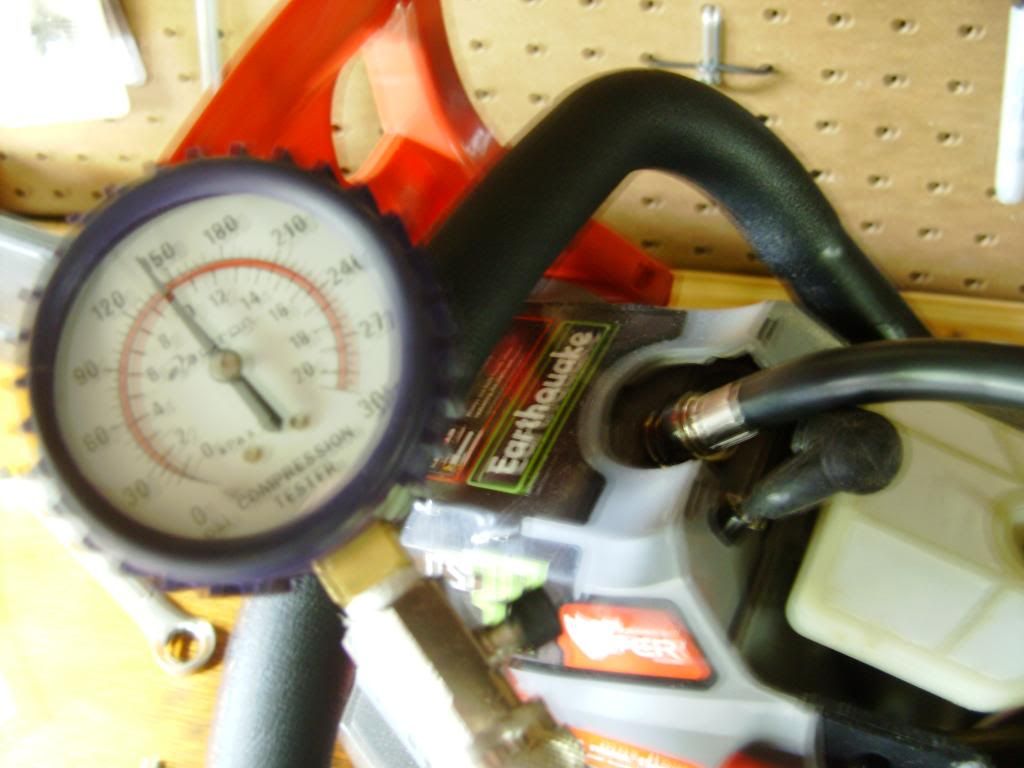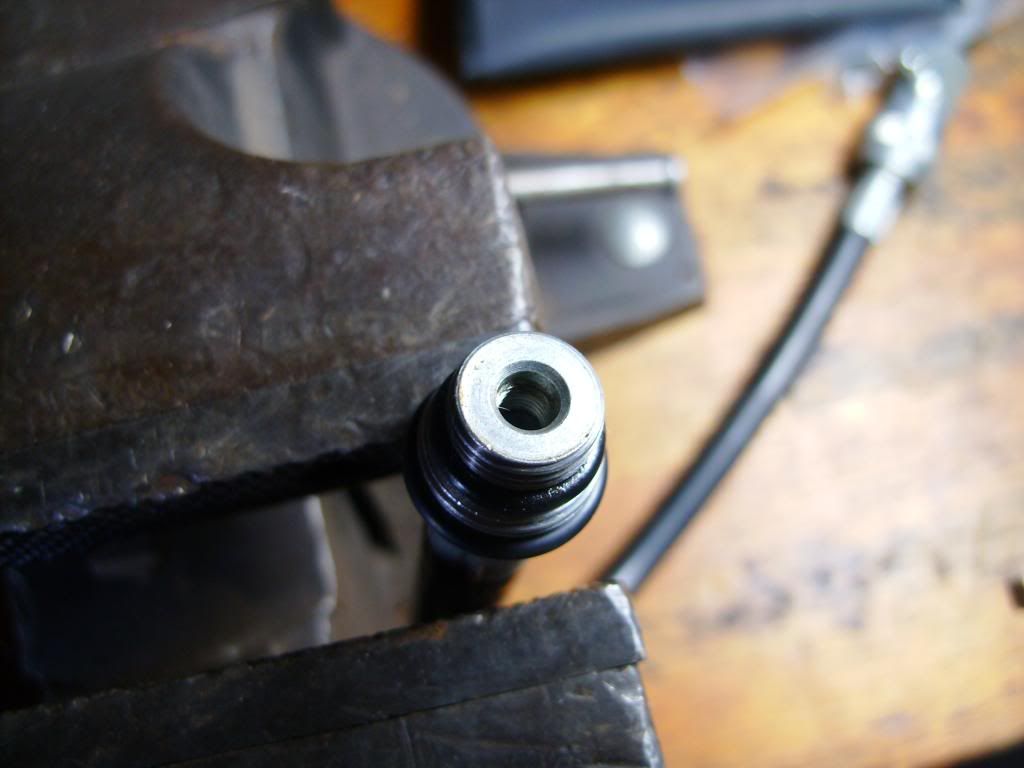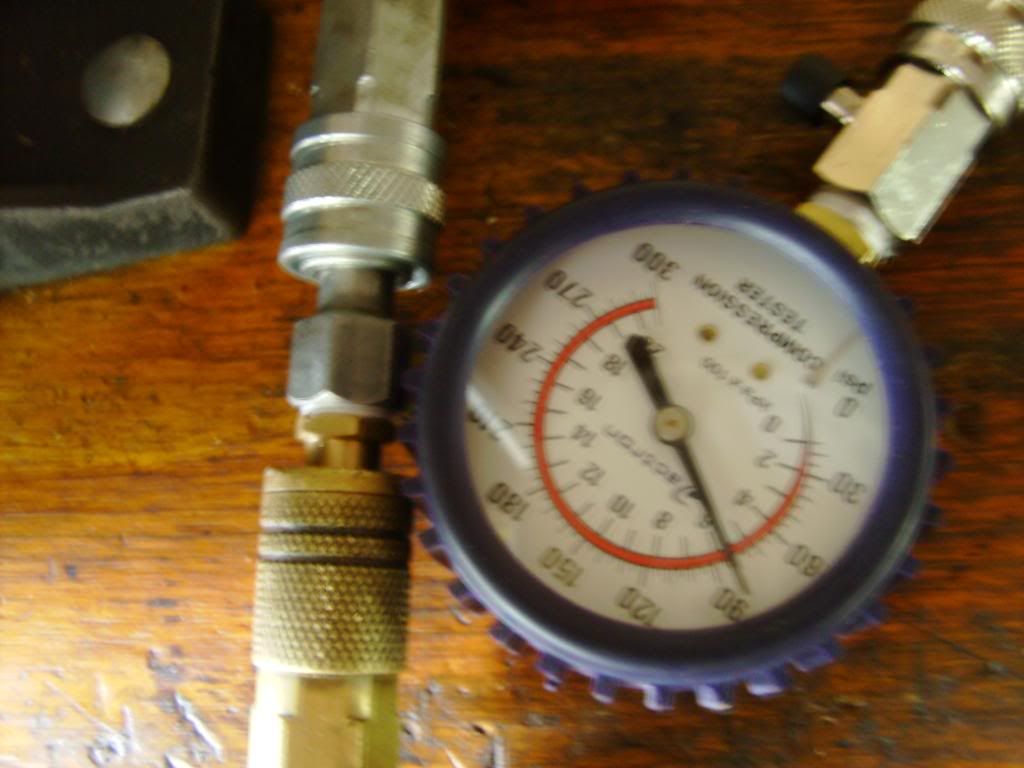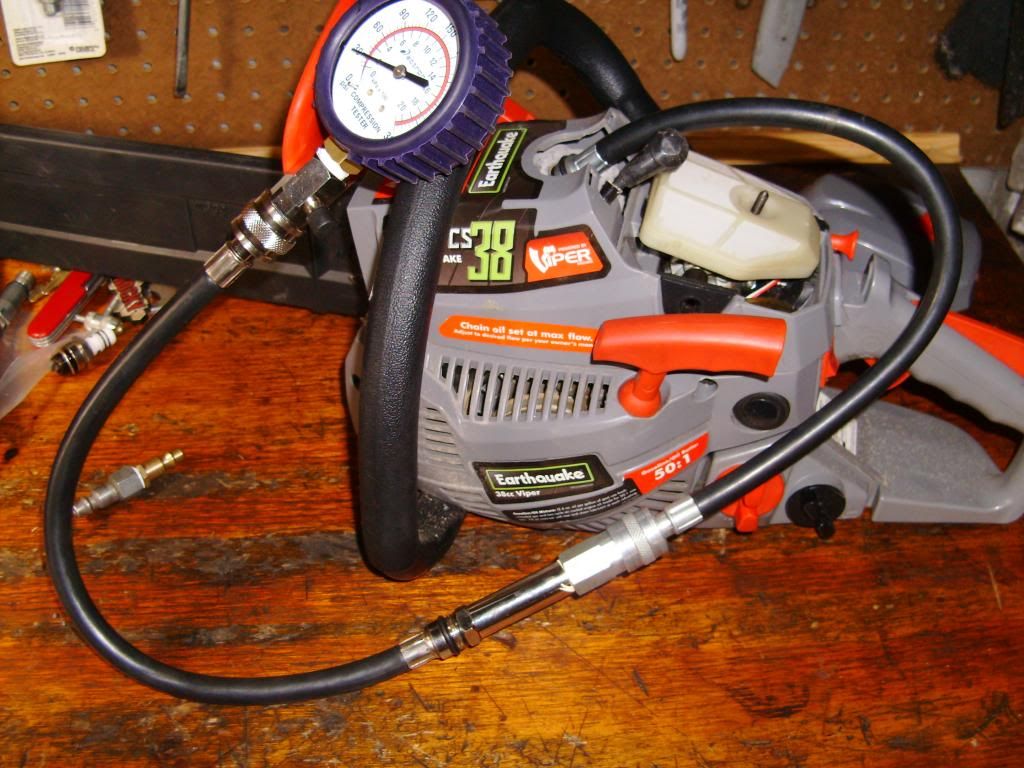Well, intrigued by the thread, so decided to a little "experiment".
Lets see what we can come up with, will the schrader valve placement vary compression readings?
Discussions about equilibrium pressures, compressibility of liquids and gasses, and volumetric compression areas have come up with two distinct thoughts about something as simple (it would seem) as placement of a schrader valve in a compression guage.
One believes that it wouldn't matter about compression, another believes it would.
Arguments were heard and considered from both sides, and while I had my thoughts, I did have an open mind about what the results would be. Will say that some insight may be gained by taking a compression reading without any schrader valve installed.
Anyway, a simple little test is in order. Apologies about the quality of the pictures.
I have two compression testers, two hoses and adapters and such so decided to see what I could come up with.
The baseline test of an Earthquake 3816.
All results were obtained by pulling until the guage stopped rising.
Single hose, schrader valve in.
Around 150psi.
Schrader valve removed.
Here is the setup, verified by 90psi on my compressor guage.
INSERTION of another scientific question and thought of compressibility and areas. Why did my compressor guage read 95-100 psi, but the guage less than 90 psi? Did the 50' of pipe and hose have anything to do with it, or was my guage off? Would I obtain a different reading without that length of pipe and hose inbetween? Would the expansion of the hose under pressure decrease my reading, even though it was at equilibrium with the compressor?
Another experiment for another day... :smile2:
Anyway, this is with a single hose without the schrader valve attached to an adapter that adapted it to the second hose with the schrader valve in it. The part in the middle is from the other compression tester.
And for the results. It was so distinct, that you could even feel the difference in pulling it over.
One could also just take the schrader valve out and plug the guage end of the hose and probably tell the difference, but I did not do this....
Thoughts? Criticisms? Possible sources of error? The adapter connection was ONLY verified by the readings on the compressor, and by the fact that I never heard any leaks when pulling on it, but no water leak test was performed on it.
I took it apart before thinking about that.
Oh, don't take this too seriously, whether my experiments or thoughts are right or wrong, it was just all in fun.
No published scientific papers from me are in my future... :msp_tongue:





